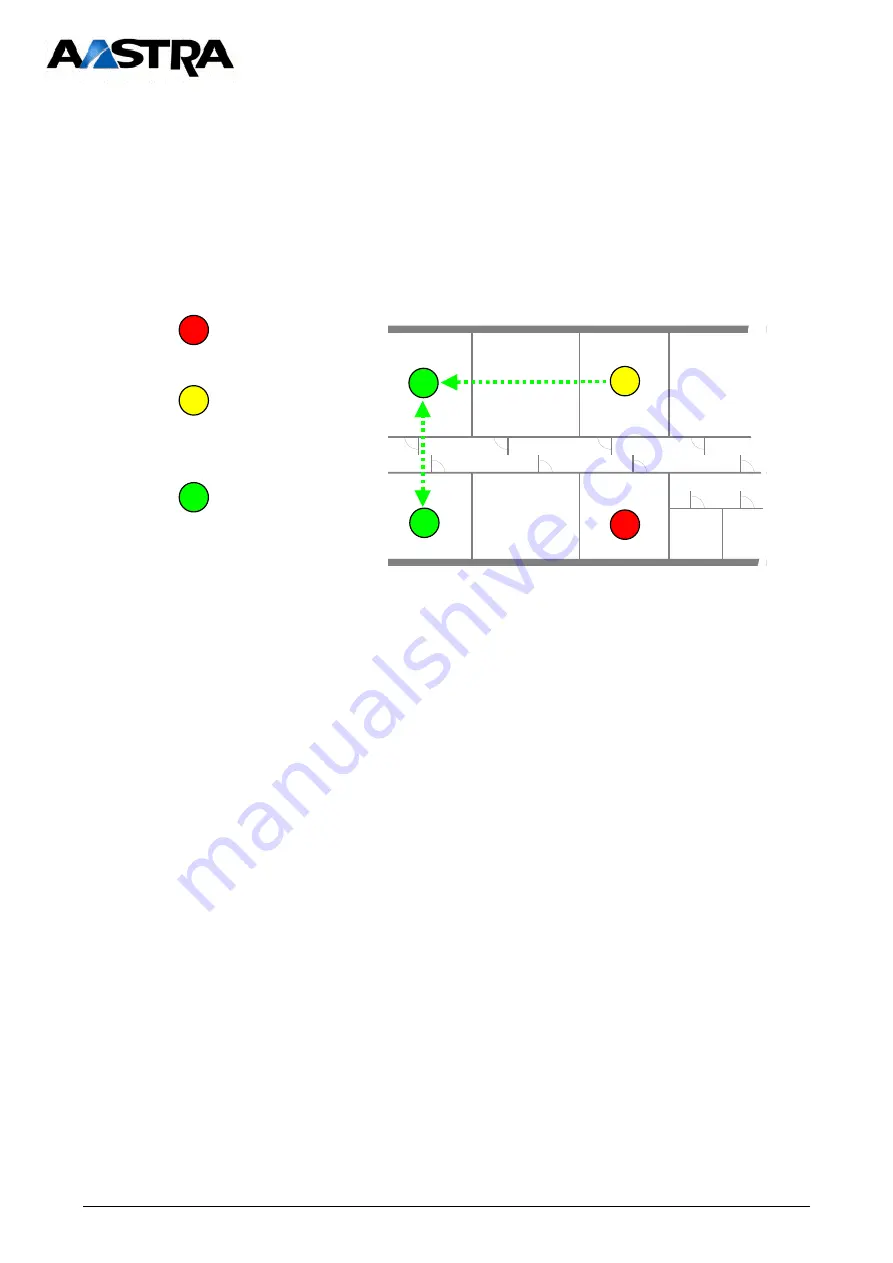
Page
20
01/2007
AMT/PTD/PBX/0062/1/2EN
When all the RFPs are started up, the first RFP to synchronise by receiving the radio signal over
the IP frame will be considered as the reference RFP for the entire system. The synchronisation
is then transmitted to all the RFPs over the air interface.
The first RFP to synchronise in turn transmits a signal on the air and becomes the
synchronisation source for the next RFPs, and so on.
Only RFPs which can receive each other will be synchronized.
R 111
R 110
R 109
R 108
R 106
R 101
R 102
R 103
R 104
R 105
R 107
Unsynchronized RFP,
which does not receive a
signal from another RFP
Unsynchronized RFP,
which receives a signal
from another RFP and
tries to get synchronized
Synchronized RFP,
which receives and
transmits a signal on the
air interface
As long as an RFP is not in sync, no calls can be set up using this RFP.
If an RFP loses the synchronization the RFP does not accept new calls (‘busy bit’). There is a
delay of max. 3 minutes until the active calls on this RFP are finished. Then it tries to get
synchronized again.
An IP DECT installation is more reliable if an RFP can receive the signal from several RFPs,
because the other signals are also used for synchronization






























